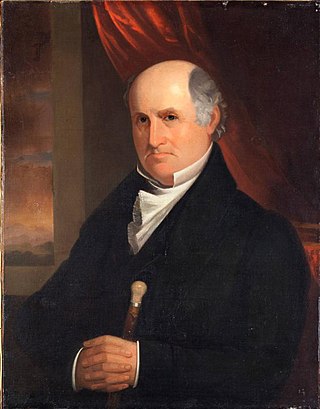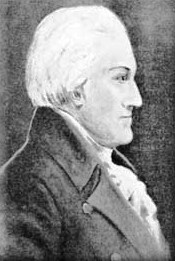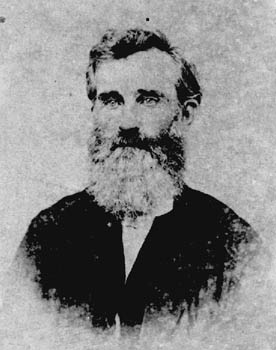
Robert Gould Shaw was an American officer in the Union Army during the American Civil War. Born into a abolitionist family from the Boston upper class, he accepted command of the first all-black regiment in the Northeast. Supporting the promised equal treatment for his troops, he encouraged the men to refuse their pay until it was equal to that of white troops' wage.

Thomas Hopkins Gallaudet was an American educator. Along with Laurent Clerc and Mason Cogswell, he co-founded the first permanent institution for the education of the deaf in North America, and he became its first principal. When opened on April 15, 1817, it was called the "Connecticut Asylum for the Education and Instruction of Deaf and Dumb Persons," but it is now known as the American School for the Deaf.
Samuel Laurence Gouverneur was a lawyer and civil servant who was both nephew and son-in-law to James Monroe, the fifth President of the United States.

Louis Laurent Marie Clerc was a French teacher called "The Apostle of the Deaf in America" and was regarded as the most renowned deaf person in American Deaf History. He was taught by Abbé Sicard and deaf educator Jean Massieu, at the Institution Nationale des Sourds-Muets in Paris. With Thomas Hopkins Gallaudet, he co-founded the first school for the deaf in North America, the Asylum for the Education and Instruction of the Deaf and Dumb, on April 15, 1817, in the old Bennet's City Hotel, Hartford, Connecticut. The school was subsequently renamed the American School for the Deaf and in 1821 moved to 139 Main Street, West Hartford. The school remains the oldest existing school for the deaf in North America.

Van Asch Deaf Education Centre was located in Truro Street, Sumner, Christchurch, New Zealand. It was a special school for deaf children, accepting both day and residential pupils, as well being as a resource centre providing services and support for parents, mainstream students and their teachers in the South Island and the Lower North Island.

John Rutherfurd was an American politician and land surveyor. He represented New Jersey in the United States Senate from 1791 to 1798.

Samuel Pomeroy Colt was an industrialist and politician from Rhode Island. He formed the United States Rubber Company, later called Uniroyal, the largest rubber company in the nation.
James M. Nack was a deaf American poet.

Milton Jameson Durham was a U.S. Representative from Kentucky and served as First Comptroller of the Treasury in the administration of President Grover Cleveland. An alumnus of DePauw University and the University of Louisville School of Law, Durham held no political office prior to his appointment as a circuit court judge by Governor Beriah Magoffin in 1861. He was elected to represent Kentucky's Eighth District in Congress in 1872. He served three terms and was a member of several finance-related committees. He was narrowly defeated for renomination in 1878 by Philip B. Thompson, Jr. at the district's Democratic nominating convention.

Henry Beekman Livingston Jr. was an American poet, and has been proposed as being the uncredited author of the 1823 poem A Visit from St. Nicholas, more popularly known as The Night Before Christmas. Credit for the poem was taken in 1837 by Clement Clarke Moore, a Bible scholar in New York City, nine years after Livingston's death. It was not until a further twenty years had passed that the Livingston family knew of Moore's claim, and it was not until 1900 that they went public with their own claim. Since then, the question has been repeatedly raised and argued by experts on both sides.

The New York Chamber of Commerce was founded in 1768 by twenty New York City merchants. As the first such commercial organization in the United States, it attracted the participation of a number of New York's most influential business leaders, including John Jacob Astor, Peter Cooper, and J. Pierpont Morgan. The chamber's members were instrumental in the realization of several key initiatives in the region – including the Erie Canal, the Atlantic cable, and the New York City Transit Authority. The Chamber of Commerce survives today as the Partnership for New York City, which was formed from the 2002 merger of the New York Chamber of Commerce and Industry and the New York City Partnership.

John Dennis Phelan was an American editor, politician and jurist. He served as Speaker of the Alabama House of Representatives.
The New York School for the Deaf is a private school for the deaf in Greenburgh, New York, in Westchester County just north of New York City, United States. It is private non-profit tax-exempt organization under article 501(c)(3) of U.S. law.

William Lawrence Chaplin was an abolitionist in the years before the American Civil War. Known by the title of "General," he was an agent for the American Anti-Slavery Society and a general agent for the Underground Railroad. He was imprisoned for the attempted escape of two individuals, which required $25,000 to get out of jail and safely out of Maryland. He was an editor at two anti-slavery newspapers and he was a Harvard-educated lawyer for a couple of years. He and his wife operated the Glen Haven Water Cure spa in his later years.
Elihu William Nathan Starr, born in New Haven, Connecticut, on August 10, 1812, was the ninth Adjutant General of the State of Connecticut. He was later elected to the position of town clerk for the City of Middletown. He also served as treasurer and Judge of Probate

Harvey Prindle Peet was an American educator.

Susan Archer Weiss was an American poet. Losing her hearing as a child, she rarely mingled in society beyond a select circle of friends, finding her happiness in her home. Her life was essentially that of a poet, though she also painted. In September 1859, a collection of her poems was issued by Rudd & Carlton, of New York City. Her name was included among those of young writers in American Female Poets, Sarah Josepha Hale's Woman's Record, and other similar works. Weiss was a friend of Edgar Allan Poe. She died in 1917.
Levi Strong Backus (1803–1868) is widely considered the first deaf editor of America, if not the world. He ran a newspaper called the Radii.

Theophylact Bache was an American merchant and fifth president of the New York Chamber of Commerce
Mary Swift Lamson, was an American educator and writer best known as a teacher of Laura Bridgman, at the Perkins Institute for the Blind. She wrote the book Life and Education of Laura Dewey Bridgman, the Deaf, Dumb, and Blind Girl (1884) about her experiences teaching Bridgman.















